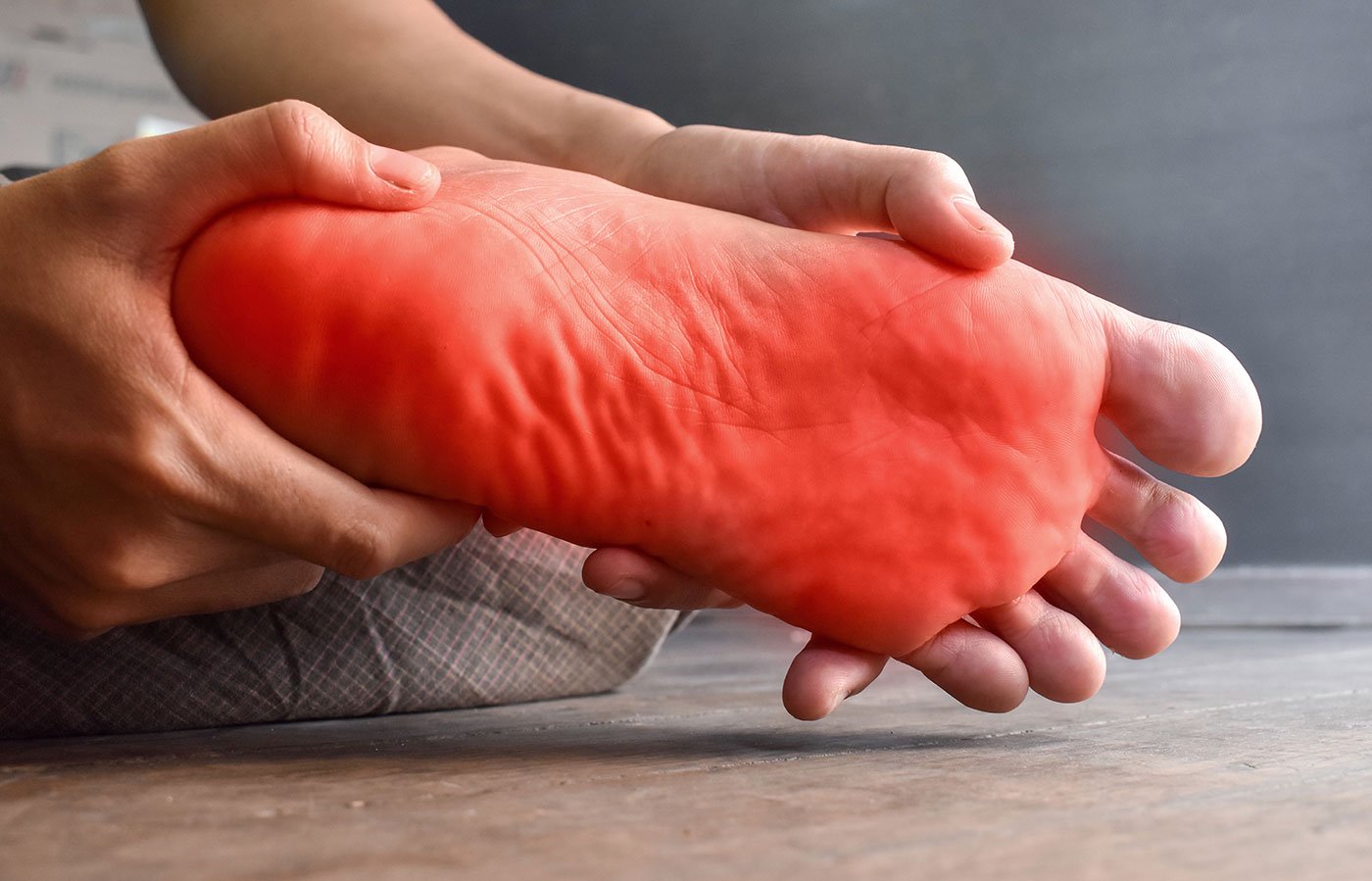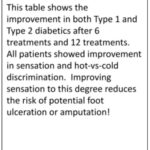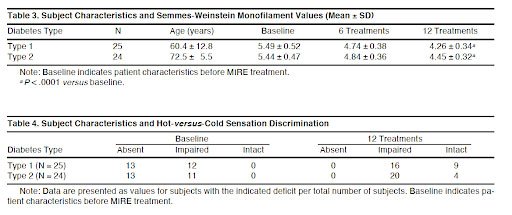Reversal of Peripheral Neuropathy in Patients with Diabetes
Diabetic peripheral neuropathy is a progressive disease that has been thought to have no effective treatments to reverse the condition. Peripheral neuropathy is partially caused by a decrease in circulation in the hands and feet in diabetic patients. Numbness, tingling, and pain in the hands and feet typically begins several years after the initial onset of diabetes. If the degree of sensory loss becomes severe enough it can lead to ulcer formation and eventual amputation. Therefore, restoring blood flow in patients with diabetes can restore sensation in the hands and feet and potentially reverse neuropathy and thereby prevent ulcer formation and amputations.

peripheral neuropathy, diabetes, near-infrared treatment, fort collins medical clinic
Typical medical treatments for neuropathy are medications aimed at reducing symptoms but do not address the underlying cause of neuropathy. Frequently prescribed medications include
- Pain Killers. Over the counter NSAIDS may be recommended for minor symptoms. Opioids such Tramadol and Oxycodone are frequently prescribed for more severe pain. Opioids can be very addictive and dangerous.
- Anti-Seizure Medications. Gabapentin (Gralise, Neurotin, Horizant) and pregabalin (Lyrica) were originally developed to treat epilepsy, however they may relieve nerve pain and are frequently prescribed to patients with neuropathy. Side effects include drowsiness and dizziness.
- Antidepressants. Antidepressants have been found to relieve pain by interfering with chemical process in the brain and spinal cord. Side effects of antidepressants included dry mount, nausea, drowsiness, dizziness, changes in appetite, weight gain and constipation.
- Topical treatments. Capsainin cream may provide some improvements, however it may also irritate the skin and cause burning sensation.
Near-Infrared Light Treatment
A study published in the Journal of The American Podiatric Medical Association (Kochman, Carnegie, and Burke 2002) looked at the results of patients with diabetic neuropathy that were treated with monochromatic near-infrared photo energy (MIRE) in a Colorado medical clinic. MIRE has been cleared by the FDA for treatments aimed to increase circulation and decreasing pain. At the end of this 30-day trial, 100% of the patients had improved feeling in their feet. On the basis of Semmes-Weinstein monofilament test (which is a test used to measure sensory loss) and a test used to differentiate hot-vs-cold discrimination, all of these patients had peripheral neuropathy. All of these patients underwent 30 days of typical medical treatment for diabetes, prior to receiving the MIRE treatment, with no improvement in sensation. Treatment for 30 days with MIRE using the Anodyne Therapy System was administered after the failed medical treatments.


How Does Near-Infrared Treatment Work?
The underlying cause of improvement in neuropathy may impart be due to improved circulation, resulting from increased nitric oxide (NO2) production. Nitric oxide is a vasodilator which increases circulation. It is well documented that photo energy can modulate circulation. Red blood cells are able to store large amounts of nitric oxide and they are also able to absorb near-infrared photo-energy well. Thus, the vasodilation caused by photo-energy may be, in-part, from the localized release of NO2 from red blood cells passing through vessels exposed to near-infrared photo energy.
In diabetics, glycolyzed hemoglobin (red blood cells bound to glucose/sugar) sticks to nitric oxide and inhibits the release of NO2, thereby decreasing vasodilation and circulation. Perhaps, Near-Infrared photo energy allows for nitric oxide to be released more easily in diabetics.
Conclusions
The outcome of this study suggests that monochromatic near-infrared energy, such as that from The Anodyne Therapy System, has the ability to improve neural function in patients with diabetes.
Click on the link to learn more about peripheral neuropathy treatment in Fort Collins. If you are tired of dealing with the loss of sensation and increased pain in hands and feet, call our office at 970-207-4463 and request a FREE consultation.
Kochman AB, Carnegie DH, Burke TJ. Symptomatic reversal of peripheral neuropathy in patients with diabetes. J Am Podiatr Med Assoc. 2002 Mar;92(3):125-30. doi: 10.7547/87507315-92-3-125. PMID: 11904323.
